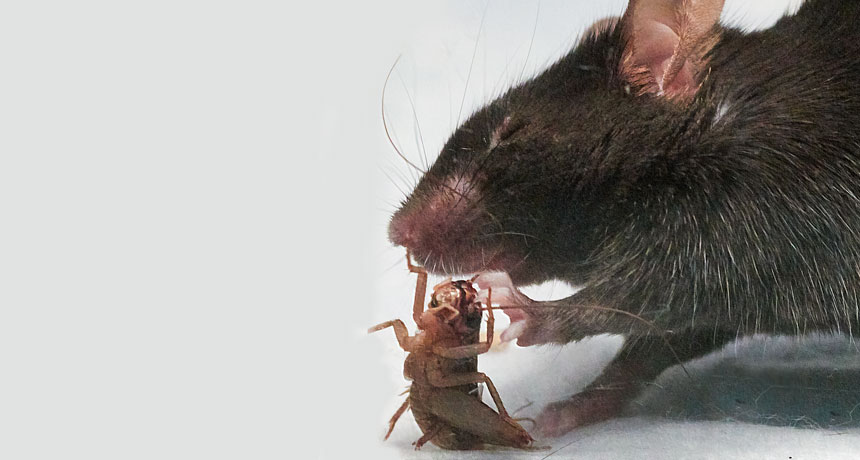How mice use their brain to hunt
Scientists light up nerve cells with lasers to illuminate amygdala’s role in stalking, chomping

MASTER HUNTER Nerve cells in a mouse’s amygdala send messages that help the rodent chase and kill prey such as crickets, a new study shows.
Barry Green/John B. Pierce Laboratory






